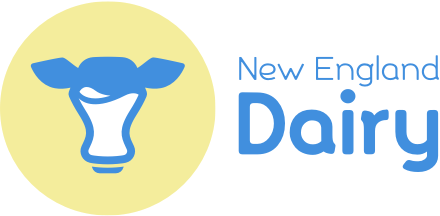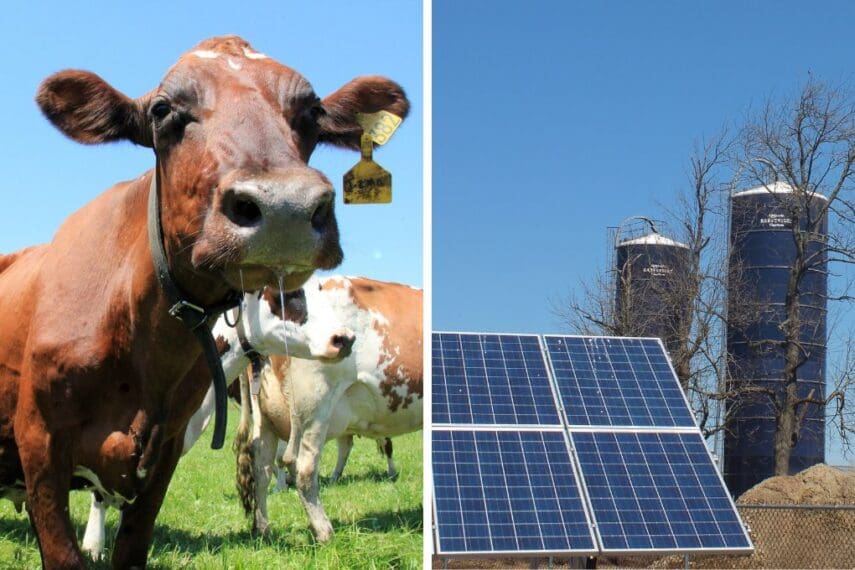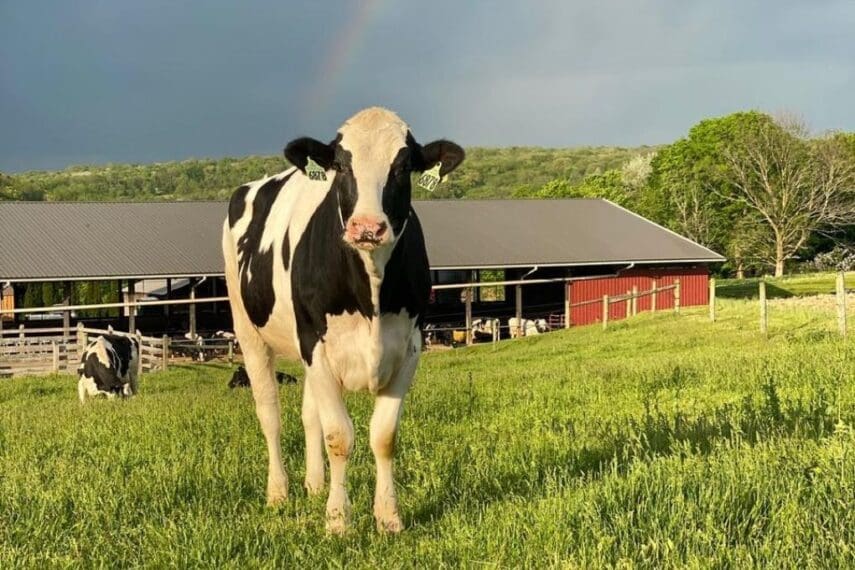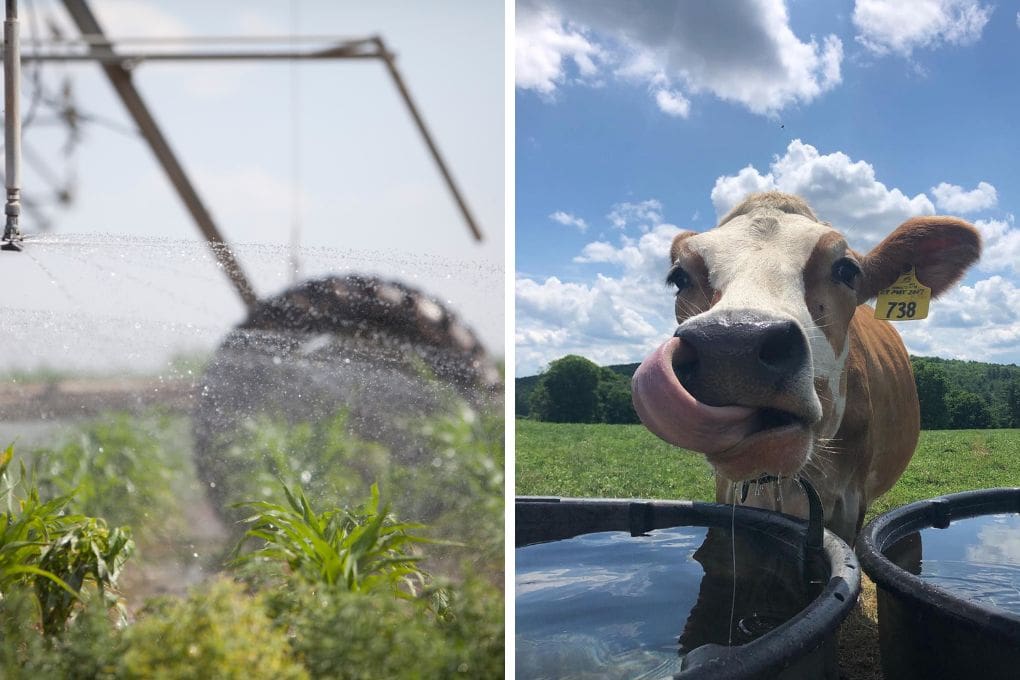
Water usage on farms is always an important consideration. Water is a vital resource on New England’s dairy farms for the many roles it plays, and farmers make every drop count. Water keeps cows healthy and is an important part of producing high-quality, nutritious milk. From hydrating cows to cleaning barns, water flows through every aspect of a dairy farm. While farmers are committed to reusing and recycling water on-farm, they are equally as committed to caring for New England’s lakes, rivers, and streams.
Water’s Important Role in Cow Care
Dairy farmers provide clean, dry bedding for their cows and access to food and water 24 hours a day.
Like humans, cows need access to fresh, clean water. While the average human needs between 11.5 and 15.5 cups of water each day, cows consume between three and 50 gallons. The amount depends on their age, size, and stage of production – for example, a calf will drink less than a cow in the milking herd. In warmer months, cows’ water intake can double.
Many farms use sand, straw, or other organic materials for cow bedding in barns. However, some farms use waterbeds. This type of bedding includes a rubber cover with a pouch inside to hold water, which reduces cow’s pressure points. Waterbeds provide comfortable bedding for cows, who sleep or lounge for 12 to 14 hours a day. Learn how Lanphear Farm in Vermont uses water beds for cow comfort.
Water also contributes to cow’s foot care on dairy farms. Farms use footbaths, which clean and disinfect cows’ feet while preventing manure and dirt buildup. Footbaths are a key tool for dairy farmers to maintain hoof health. The herd at Sweet Farm in Vermont is treated to a foot bath every day when 4,000 gallons of recycled water flows beneath their feet to clean the barn.
Water is Reused and Recycled on Dairy Farms
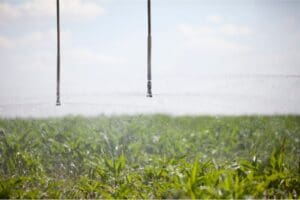
Reusing and recycling water is standard practice on dairy farms. In fact, one gallon of water can be recycled up to four times on a dairy farm.
When milk leaves a cow’s body, it is over 100 degrees. Water is then used in the cooling system to quickly chill the milk to 38 degrees as it prepares to make its way from the farm to your fridge. Dairy farmers later take the water used to cool milk and recycle it, using it to clean milking parlors and barns or as a natural, nutrient-rich resource to irrigate fields.
Dairy Farmers’ Commitment to Water Stewardship
Dairy is made with care for the planet. The dairy industry’s 2050 Environmental Stewardship goals support a vision that U.S. dairy is an environmental solution. The goals include:
- Achieve greenhouse gas (GHG) neutrality
- Optimize water use while maximizing recycling
- Improve water quality by optimizing utilization of manure and nutrients
 Quality water is essential to a dairy farm, both on and off the farm. New England’s dairy farmers are committed to caring for our lakes, rivers, and streams. One way they do this is through soil management practices, including planting cover crops, the use of vegetative buffers, and low and no-till farming. Research has shown that for every one percent increase in organic matter through the adoption of these sustainable practices, the soil retains an additional 20,000 gallons of water per acre.
Quality water is essential to a dairy farm, both on and off the farm. New England’s dairy farmers are committed to caring for our lakes, rivers, and streams. One way they do this is through soil management practices, including planting cover crops, the use of vegetative buffers, and low and no-till farming. Research has shown that for every one percent increase in organic matter through the adoption of these sustainable practices, the soil retains an additional 20,000 gallons of water per acre.
Water usage on farms is just one area where dairy farmers are working to care for the planet. Learn more about the other actions dairy farmers are taking every day to be more sustainable.
